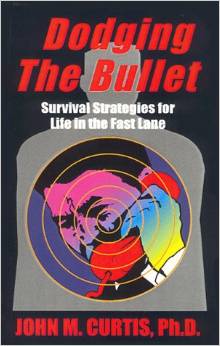LOS ANGELES.–Wall Street has its own publicity department busy putting out press releases at a furious pace, whether the excuses have anything to do with why markets are selling-off or buying back. When Trump announced “liberation day” to implement long-overdue tariffs on foreign competitors like Canada, Mexico, European Union, China, etc., Wall Street decided to blame Trump for the sell-off in equities, now about 15%. Most major correction move closer to 20% so the current sell-off could continue for some time. When the stock crashed Feb. 19, 2020 the Dow Jones Industrial Average was 29,348 dropping to 19,173 March 20, 2020, or a whopping 33%, not the 15% drop from Dec. 4, 2024 at 45,024 to Friday’s close at 38,314 or about 15%. So when it comes to blaming Trump for the current market collapse it’s all politics, knowing all market averages were grossly inflated.
Bull markets don’t last forever and are punctuated by periodic Wall Street corrections, varying in the degree of severity and duration. When the pandemic induced sell-off happened between February 19, 2020 and March 20, 2020 market averages dropped about 22% before rebounding, taking more time before recovering all losses. What happens this time around depends of whether the U.S. economy rebounds from Trump’s attempts to level the trade playing field, normalizing them with tariffs. No one knows when a bottom will be hit or what percentage market averages will have to drop to satisfy Wall Street traders looking for a correction. “We have been the dumb and helpless whipping post, but not any longer. We are bringing back jobs and businesses like never before,” Trump wrote on his Truth Social platform, trying to reassure the public that things will get better.
Trump ran on an economic platform in 2024 to implement tariffs to see if he could end U.S. trade-deficits or lower them, to get the U.S. economy the best possible advantage. Many Democrat economists like former Treasury Secretary Larry Summer warn of massively higher prices for ordinary consumers under Trump’s new tariffs’s policy. “This is an economic revolution, and we will win,” Trump said. “Hang tough, it won’t be easy, but the end result will be historic,” claiming the U.S. economy would be in a far stronger position. If you listen to CNN and MSNBC, they have their anti-Trump news teams parading one pundit after another claiming Trump has created the worst economic calamity in U.S. history. All of Trump’s tariffs have yet to click in on April 9 when 60 countries including the European Union face higher tariffs based on individual countries.
Trump claims that since China joined the World Trade Organization [WTO] Dec. 11, 2001 they’ve always had high tariffs on U.S. goods, over time creating today’s $295.4 billion trade deficit that now exists. Trump’s tariffs attempt to correct long-standing trade imbalances that led to the whopping trade deficit. “China has been hit much harder that the USA, not even close,” Trump said in a post. “They and many other nations have treated us unsustainably badly,” prompting him to impose new tariffs. Trump spared temporarily pharmaceuticals, copper and lumber, all he wants reevaluated at some point for possible tariffs. Trump has deliberately staggered deadlines on tariff implementation giving trade representatives an opportunity to renegotiate tariffs applied to the United States. EU trade chief Maros Sefcovic said he would evaluate Trump’s tariffs before acting.
Trump wants Chinese, EU, Japanese, Canadian, Mexican and other trade representatives to negotiate better deals to avoid or at least reduce U.S. tariffs. Trump said he had a productive call with Vietnam’s top leader with his country facing 46% in U.S. duties. Canada and Mexico aren’t impacted by the current 10% increase in duties, since they already pay 25% on goods outside the North American Free Trade Agreement. Mexico’s President Claudia Sheinbaum says she wants to discuss tariffs and duties with Trump before she takes more action. Japan’s Prime Minister Shigeru Ishiba called for “calm headed” approach to dealing with tariffs, largely because he knows Japan makes it nearly impossible to export goods into Japanese markets. Trump wants Japan to open up markets, especially to U.S. farmers. Japan’s currently sells no U.S. automobiles into the Japanese car market.
U.S. consumers need to stop listening to the fake news that only seeks to discredit Trump politically to help win the House and Senate back in the 2026 Midterm elections. Everything heard on CNN and MNBC spell catastrophe for Trump’s economic moves. Trump’s programs haven’t been implemented yet so no one really knows what, if any, adverse effects tariffs will have on the U.S. economy. Blaming Trump’s tariff policy on the current meltdown in equities on Wall Street isn’t factual because U.S. stocks were long overdue for a market correction. When it comes to all of Trump’s tariffs they’re all subject to negotiation where Trump attempts to get China, Canada, Mexico and the EU to reduce long-standing tariffs and duties on U.S. goods. Instead of looking only for disaster, it’s possible Trump will get more favorable terms for U.S. companies doing business overseas.
About the Author
John M. Curtis writes politically neutral commentary analyzing spin in national and global news. He’s editor of OnlineColumnist.com and author of Dodging The Bullet and Operation Charisma.



